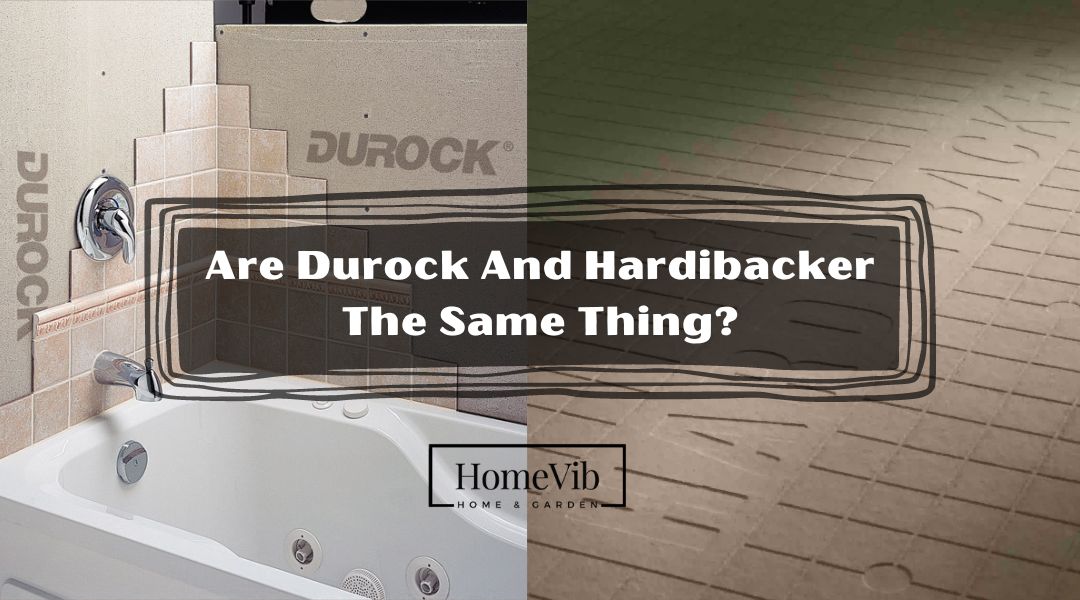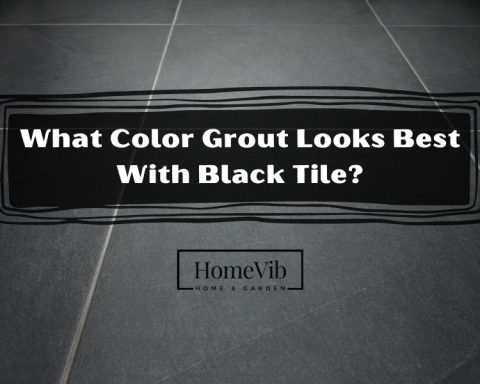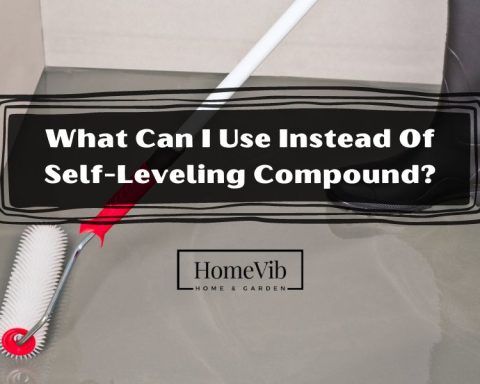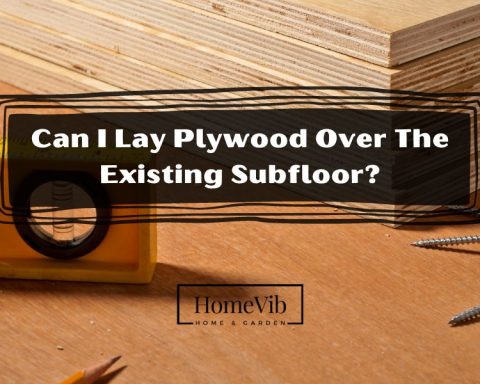Durock and Hardiebacker are not the same. Although both are used for the same type of work, they are two different products.
What is Durock?
Durock is a cement board used for Exterior Insulation and Finish System (EIFS) finishes and stucco. It is a cement backer board brand generally used on steel and wood.
Cement backer boards are often utilized when installing stone tiles, porcelains, or ceramics for floors, walls, and ceilings. This is generally used in damp environments to replace plywood or drywall.
What Is The Purpose Of Durock?
Durock takes the place of rigid polystyrene foam, commonly used under the installation of the EIFS. You can use it as an excellent system for blocking moisture from your property.
It is the best exterior drywall for slab-to-slab solutions. If you have trouble covering any floor slab misalignments, use Durock instead of bricks or blocks as a curtain wall solution.
Pools, kitchens, showers, and saunas are exposed to high levels of moisture, which need interior drywalls. Since Durock has excellent water resistance, this is the best product for high moisture solutions.
An aggregated Portland cement core is part of its composition, which you can break easily with a utility knife for your DIY projects.
It has two sides–the glass-fiber mesh side for mastic or thin-set mortar and a smooth side for adhesive applications.
What Is Hardiebacker?
Hardiebacker is a cement board for tile and stone to replace plasterboard or plywood. The name “hardiebacker” or “Hardie board” came from its manufacturer—James Hardie.
This is used for counterparts, walls, and floors and is designed for easy installment and dimensions.
It is the most substantial cement backer board, with a unique cement formulation and the right amount of strength, uniform composition, and performance.
What Is The HardieBacker Used For?
They are used as a backer board or underlayment for tile installation. It can be your great assistant for any tiling job with a strong base. HardieBacker has a square-inch grid system for measuring, cutting, and scoring.
Backer board nails can be nailed or screwed into the floor and wall. Although it was intended for internal use only, it effectively served its purpose as a cement base to a timber wall that provided extra stability and structure.
Hardiebacker board is waterproof and fits wet bathrooms and rooms with underfloor heating. You can add wallpaper, plaster, and paints for extra creativity.
Are Durock And Hardiebacker The Same Thing?
Durock is known as a cement board, and HardieBacker is a fiber cement board. A cement backer aims to make a surface for your tiles and stones.
The surface should be straight, even, and resistant to mold, rotting, and moisture damage.
Both are used for home and property renovation and construction, but these are two different products and brands. There are some distinctions between each cement backer.
Durock can be applied to your pool areas and fireplaces to resist condensation. You can usually notice mold and moisture growing faster in bathrooms; the best way to avoid it is to use a cement board where water usually runs.
In contrast, HardieBacker cement board is a tile underlayment produced for wet areas like kitchens and bathrooms and is only for indoor usage.
7 Similarities And Differences Between Durock And Hardiebacker
These two are the most popular cement backer boards in the market and are commonly used for the same purposes. However, Durock and HardieBacker are not the same.
These are 7 key characteristics that make these two distinct from each other.
1. Structure

Durock contains fiberglass, polymer-coated fiberglass mesh, and a Portland cement aggregate. The fiberglass material provides outstanding durability, versatility, and strength.
The structure of HardieBacker has the advantages of strength and flexibility without compromising its integrity.
Its composition comprises 10% cellulose fibers, a MoldBlock additive, and 90% Portland cement and ground sand.
It is a cement board reinforced with cellulose fiber, making it a fiber-cement board. On one surface is a grid pattern for easier cutting.
2. Resistance
Durock has an indention strength that is greater than 1250 PSI. Its nail-pull resistance is expected to be greater than its indention strength.
It can be used for high-impact abuse-resistant partitions and can span studs up to 24 inches centers.
| Board | Indentation Strength | Flexural Strength |
| 0.25 Inches | >1200 PSI | 1200 PSI |
| 0.50 Inches | >1250 PSI | >750 PSI |
| 0.63 Inches | 1250 PSI | >480 PSI |
HardieBacker has outstanding compressive strength and resistance but can only span studs up to 16 inches centers.
| Board | Compressive Strength | Flexural Strength |
| 0.25 Inches | 7000 PSI | 2100 PSI |
| 0.50 Inches | 6500 PSI | 1700 PSI |
3. Weight
Durock weight per square foot is the same as HardieBacker, even though it contains glass mesh.
-
- 0.25 inches thick sheets weighing about 1.9 lbs/ft²
- 0.50 inches sheets weigh 2.4 lbs/ft²
- 0.63 inches panels are 3 lbs/ft²
HardieBacker weight per square foot:
-
- 0.25 inches wide sheets weigh 1.9 lbs/ft²
- 0.42 inches thick and weighs 2.6 lbs/ft²
4. Price
Durock price range falls between $13 to $15. A 0.50″ x 3’x5′ is $15, while a 0.25″x3’x5′ is $13.
HarrdieBacker ranges from $14.50 to $29.90. The estimated price for a 0.25″x3’x5′ is $14.50, 0.42″x3’x5′ is $19.34, and 0.42″x3’x5′ is $29.90.
5. Installation
Durock can be used on the interior and exterior parts of the building–inside and out, on walls, floors, and ceilings. Durock boards are easier to install than other products.
However, the process would still be messier because the board is difficult to cut.
The tools needed for installation are specified screws or nails to pre-drill frames and covers, a stainless steel 14 to 20-gauge screw, or a self-tapping galvanized one is required.
You can use mortar with 2 inches of fiberglass tape to embed materials over joints.
A heavy-duty carbide-tipped utility knife can break 0.25 inches of boards. If you want accurate cuts, using a jigsaw with masonry blades and a drill with masonry hole saw bits or a circular saw, angle grinder, and rotary cutter is better.
HardieBacker is commonly installed to plywood, wood studs, or 20 gauge or metal studs no more than 16 inches on center.
HardieBacker is best cut with a scoring knife or a carbide-tipped utility. Some installation instructions recommend scoring and knocking holes with a hammer.
With its EZ Grid pattern, you can cut perfect lines in the HardieBacker board to achieve minimal mess and smooth work.
I would not recommend using and exposing Hardiebacker on ceilings or any exterior applications.
You have to fill all the joints and seams with a tiling mortar and use 2 inches of fiberglass tape in the mortar over the seams.
Make sure to fasten the backer board using appropriate nails or screws no more than 8 inches apart and 2 inches from the corners, and 0.38 inches from the edges.
6. Thickness
Durock comes in two sizes and thicknesses that help maintain leveled transition areas on the floor. The 4-inch x 4-inch cement board is 0.31 inches wide.
It offers less support and is generally used for thinner tiles. The 3-inch x 5-inch 0.50-inch wide is needed for thicker floors and tiles for additional assistance due to direct pressure when people step onto them.
HardieBacker is either 0.25 or 0.42 inches thick, and both are available in 3’x5′ or 4’x8′ sheets. For tiled wall cladding on floors or subfloors instead of drywall, you should use HardieBacker 500 panels which are 0.42 inches thick and weigh 2.6 lbs/ft².
If you need thinner sheets on your walls, use 0.25 inches-thick sheets that weigh 1.9 lbs/ft².
7. Moisture And Humidity
HardieBacker has a problem with moisture exposure, so using a waterproof sealant is necessary to ensure good sanitation.
To prevent moisture transfer, you can install a protective waterproof membrane. However, it can underlay tubs and showers because it is still mold resistant.
Durock does not break down even with continuous water exposure. It is considered waterproof and can withstand moisture for an extended period.
This does not require a waterproof membrane due to its low water absorption rate and mold and mildew resistance.
This vapor-permeable cement board will not soften, swell, delaminate, disintegrate, or decay in water.
Advantages And Disadvantages Of Durock And Hardiebacker
If you are considering choosing a cement board between Durock and HardieBacker, here are its advantages and disadvantages, which can help you make decisions.
Advantages Of Durock
Here are a few reasons why we recommend using Durock for your projects:
-
- Versatile
- Ability to bond with finishes
- Lighter in weight than other finishing products
- Has twenty years of lifespan
- Can withstand cracking, denting, and deformation
- Highly resistant to moisture and other water damages
- Its rough side is carefully designed to provide adhesion for your tile installation
- Lower maintenance
- Fire resistant
- Indoor and outdoor use, including walls, floors, ceilings, countertops, and around fireplaces and wood stoves for tile and stone backing
- Best for skirting around exterior structures, soffits, backers for pillars, and other decorative elements.
Disadvantages Of Durock
-
- It cannot be utilized for vinyl flooring
- More challenging to install
- More difficult to cut and score with the absence of grid lines.
- More expensive
- Has its potential to crack
Advantages Of Hardiebacker
-
- A tile backer, including vinyl products
- Outstanding durability
- It can protect your home and resist the elements with ease
- It resists moisture penetration
- HardieBacker provides eye-catching curb appeal
- Has high flexural strength
- Has its HydroDefense Technology that prevents moisture absorption within the board
- Repels water and eliminates the need to waterproof the entire surface
- With score lines on the board
- Non-abrasive
- Less mess and dust
Disadvantages Of Hardiebacker
-
- Indoor use only on floors, walls, and countertops
- There is a need to apply waterproofing to the joints and fasteners
- Not capable of outdoor installation
Is It Better To Use Durock Or Hardiebacker?
The comparison and contrast between Durock and HardieBacker are usually because of contractor preference. Our contractors are likelier to choose a product with better results and a more straightforward installation process.
When you purchase a cement board, you must consider how many supplies are necessary to complete the job. With contrasting uses and materials, which one is the best?
If you want a lighter and less expensive cement border, then Durock is the best choice. When it comes to countertops and tiles, HardieBacker is the go-to choice because Durock is too abrasive that it can damage vinyl, porcelain, and enamel.
HardieBacker also has no coarse materials, unlike Durock. You will have a warranty that extends over the use of vinyl tile applications.
However, Hardie Backer can only be attached at 16 inches centers or less and is not recommended for exposed exteriors and ceilings.
In impact resistance, HardieBacker has an advantage with its additional thickness. Also, it is more water resistant than Durock due to its wax additive.
It is ideal for keeping your work area neat and injury-free for laying, hanging, or making cutouts for fixtures.
Whether it be the always-helpful Durock or the ever-popular HardieBacker, choose the appropriate product to get your project underway as soon as possible.
Related Questions
Is Durock the Aame As Cement Board?
Durock is a cement board. It is called Durock because it is a brand of cement board manufactured by USG Corporation.
What Sizes Does Durock Come In?
Typically Durock standard sizes are 3 ft x 5 ft (91.4 cm x 152.4 cm) or 4 ft x 8 ft (121.9 cm x 243.8 cm).
Both sizes are available in various thicknesses – 1/4 inch (6.35 mm) or 1/2 inch (12.7 mm).
Is DensShield Better Than Durock?
It depends on your needs. Both boards are great. They have similar features and quality.
DensShield has a water-resistant core of fiberglass mat on both sides and a gypsum core encapsulated in fiberglass, while Durock is made of cement and reinforced with fiberglass mesh. So both offer excellent moisture resistance and durability.
Both boards are also easy to install and widely available in the market.
We recommend consulting with professionals, such as contractors or tile installers, to choose the most suitable board.
Which Is Better, Durock Or WonderBoard?
For indoor use in dry places, you may choose WonderBoard, but for wet areas and outdoor use, pick Durock.









